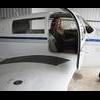Adding an OAT indicator to my M20F
-
Members Online
- Aerodon
- deleonaircraft956
- N201MKTurbo
- FADEC
- PeterRus
- finnicky7
- amekler
- rbmaze
- Fix
- redrider54
- TCW3
- FlyingScot
- George Thomson
- Hank
- redbaron1982
- haymak3r
- PT20J
- IvanP
- Marc_B
- GarrettL
- AMG880
- Rogerg
- JCCV
- bixmooney
- AndreiC
- JustusSJ
- DanM20C
- N204TA
- Ricky_231
- TheAv8r
- YeloSub
- Shadrach
- dsulli16
- Sheriff23
- PeteMc
- dominikos
- Marcopolo
- ArtVandelay
- 201er
- IgorD
- DonMuncy
- Shrobby
- Vance Harral
- dkkim73
- BobM20K
- SKI
- BlueSky247
- Carl Everitt
- eman1200
- tankles
- Willpool101


Recommended Posts
Join the conversation
You can post now and register later. If you have an account, sign in now to post with your account.